Introduction to Sedum Plants
Welcome to the world of sedums, affectionately known as stonecrop, a name that paints a picture of resilience and hardiness. These succulent beauties are the unsung heroes of gardens everywhere, bringing life and texture to rocky nooks and crannies with a tenacity that’s as admirable as it is charming. But what happens when these rugged plants hit a snag in their growth? It’s a bit like spotting a cactus in the desert that refuses to bloom—unexpected and puzzling.
Sedums come in a delightful variety of shapes and sizes, with a spectrum of vibrant colors that can leave gardeners feeling like kids in a candy shop. Imagine a palette ranging from the deepest greens to fiery reds and bright yellows, all ready to transform your garden into a tapestry of living color. Yet, despite their reputation for being almost indestructible, sometimes these plucky plants just don’t want to grow. Picture them sitting in your garden, stuck in time, while their botanical buddies are shooting up and showing off.
Understanding the reason behind a sedum’s growth stunt is akin to unlocking a botanical mystery. It could be anything from underwatering, akin to leaving a sponge out in the sun, to overzealous care, where love literally drowns the object of its affection. Maybe it’s a soil issue, where the ground is as inhospitable as a bed of nails, or perhaps it’s an uninvited garden guest, nibbling away at new growth like a sneaky midnight snacker.
But don’t fret! Knowing the secrets to achieving lush, verdant growth in sedum plants might be simpler than you think. Discovering the optimal conditions for these stonecrops can turn a struggling plant into the envy of the plant kingdom. Let’s embark on this green-fingered adventure together and bring your sedum from merely surviving to absolutely thriving!
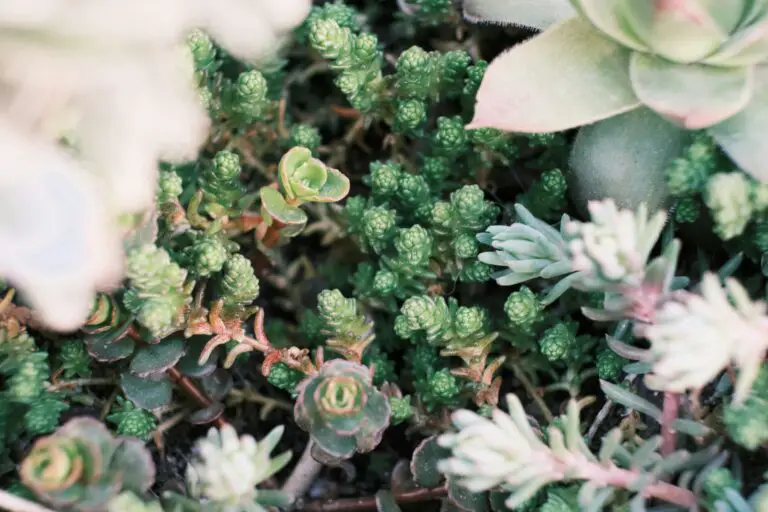
Analyzing Your Sedum’s Environment
Imagine you’re on a sun-kissed hillside; the air is balmy, the soil is just right—not too wet, not too dry. In these perfect conditions, you might stumble upon a sedum, basking blissfully in all the elements it loves. But what happens when this idyllic scene isn’t the environment greeting your sedum each day? Let’s dive into the environmental must-haves to ensure your sedum doesn’t just grow—it thrives.
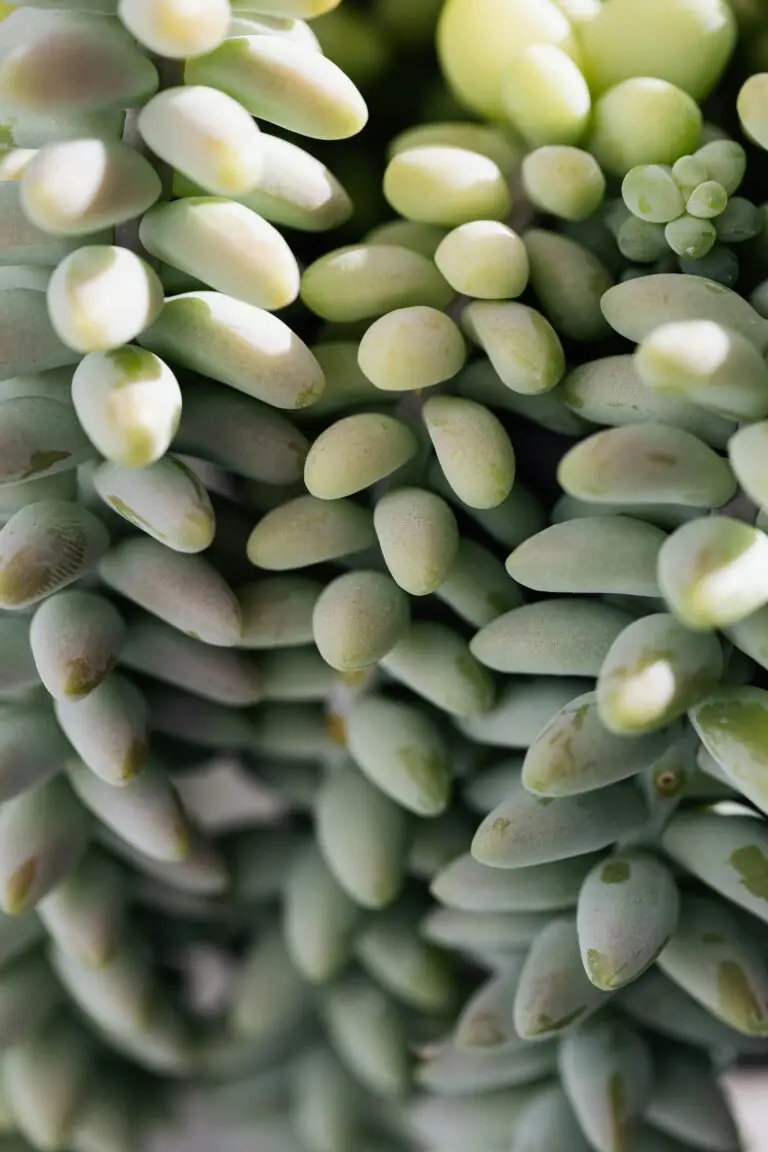
First off, sunlight is like the ultimate best friend for your sedums. They aren’t just sun-seekers; they’re sun worshippers! Too little light, and you’ll see your sedum stretch out, reaching for those golden rays as if it’s saying, “A little help here?” Sunlight is their energy drink, and without ample doses, they’ll languish. A bright, sunny spot with at least six hours of direct sunlight is what these succulent buddies crave. But there’s a catch. While they love a good sunbath, intense midday heat in the peak of summer can be stressful, so a bit of afternoon shade won’t go amiss.
Temperature talks! Sedums are quite hardy, but they do have their preferences—a bit like Goldilocks, not too hot, not too cold. Temperatures that swing from one extreme to another can leave sedums bewildered. They want that temperate sweet spot, typically between 60-70°F (15-21°C), to really show off their lush growth. But don’t worry, they can handle a bit of a chill or a spike in heat now and then.
Onto humidity—or should I say the lack thereof? High humidity can spell disaster for these desert darlings. They love to keep it on the drier side, thank you very much. Too much moisture in the air can make them prone to rot, especially if their soil holds onto water like a sponge. Well-draining soil ensures their roots stay cozy and dry. It’s all about mimicking their natural rocky, arid homes where they don’t have to worry about damp sneakers—or roots, rather.
Considering all these factors is pivotal to cultivating a thriving sedum. To help them reach their full potential, strike that Goldilocks equilibrium—just right in every aspect. If you’re looking to optimize the growth of your sedum or any other plant, fine-tuning the environment is key. Remember, a happy sedum is an environmental puzzle masterly solved. Let’s give them that stress-free life outdoors—or at least the closest we can get to an Eden for succulents in our own backyards.
Watering Woes: Are You Over or Underwatering Your Sedum?
It’s no secret that sedum, with their fleshy, water-storing leaves, are champions at enduring dry spells, but even these hardy succulents have their limits. The watering balance for sedum is a tightrope walk between too much and too little, a plight familiar to many gardeners. Let’s dive into the quirks of quenching your sedum’s thirst the right way.
Spot the Signs: Puckered leaves waving a quiet SOS? Your sedum might be gasping for a drink. Conversely, soft, discolored leaves that scream excess moisture could be victims of overindulgence. The key is to spot these red flags early. A healthy sedum should display plump, vibrant leaves – a testament to perfect watering harmony.

For those who’ve experienced the tragedy of a sedum succumbing to soggy soil, know you’re not alone. Overwatering is a common mistake, especially when your protective instincts kick in. But here lies the crux: sedum roots relish a brief drought as it encourages a robust root system. On the flip side, ensure you’re not leaving your sedum high and dry for too long. They need that periodic watering to recover their turgor and resilience.
It’s a delicate dance, and every sedum species has its own rhythm. Take the ‘Autumn Joy’ – a sedum that will tell you quite bluntly if it’s not enjoying the moisture mix. Want to master this dance? Step one might be a course in proper sedum plant watering. Yet, understanding your particular plant’s needs is akin to decoding a secret language. Fear not; you don’t need to be a plant whisperer to crack the code.
Adjusting your watering based on the sedum variety, season, and the climate you’re in, is essential. During the scorching summer months, your sedum might be parched more often. In contrast, cool winters call for a more hands-off approach. And, for the ideal balance, remember to let the soil dry between watering sessions – it’s the golden rule.
If you’re searching for more gems on how to keep your succulents sprightly, you might want to read about the secrets of hardy succulents. There’s a whole world of wisdom out there, each tip and trick promising to bring you closer to achieving the lush, robust growth you and your sedum desire.
The Soil Situation: Examining Soil Type and Drainage
Picture this: You’ve found the perfect sunny spot in your garden, and you’ve planted your sedum with the hope of seeing it flourish into a stunning display of plump foliage and vibrant blooms. But weeks have gone by, and your sedum seems to be stuck in a state of arrested development. If this sounds all too familiar, it’s time to turn our attention to the unsung hero of horticulture—yes, I’m talking about soil!
Sedum, those hardy succulents we all love for their drought tolerance, have one non-negotiable demand: well-draining soil. Don’t let their rugged reputation fool you; sitting in soggy soil is as distressing for them as sitting in traffic is for us. You see, sedum roots despise waterlogged environments, which can lead to root rot—a death sentence for our succulent friends.
Now, let’s dig a little deeper. What actually makes for ‘well-draining soil?’ It’s all about the texture. Sandy or gravelly soil lets water slip through with ease, while clay holds on to moisture like a sponge. If you’re stuck with the latter, fear not! You can amend your soil with a mix of sand, perlite, or even small gravel, transforming it into a fast-draining paradise. It’s like giving your sedum the equivalent of VIP backstage passes to the rock concert of growth.
But, how can you tell if your soil is secretly a water trap? Perform a simple test: water the area and observe. If the water lingers like an uninvited guest, you’ve got your answer. Remember that real-life story about the gardener who revamped their entire sedum bed? By amending their heavy clay soil, they went from sedum sorrow to sedum success, with their plants finally pumping out fresh growth as if they’d been turbocharged!
And before you think soil improvement is a chore, think of it as a one-time investment with lifetime benefits for your garden. Much like brewing the perfect cup of coffee, getting your soil’s drainage right can be the difference between a bland garden and a spectacular one. In other words, give your sedum the right foundation, and they’ll reward you with unstoppable vitality.
Now, feast your eyes on the transformation that awaits your sedum with the right soil setup:
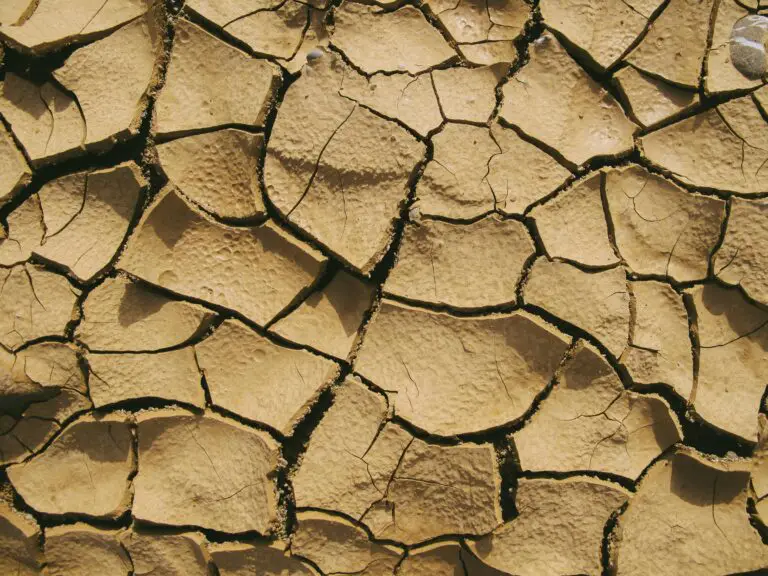
With our soil situation sorted, you’re well on your way to unlocking the lush, thriving garden scene you’ve always desired for your sedum. Stay tuned, as there’s more to nurturing these succulents than just the ground they call home. Next up, we’ll explore another key element in the sedum success story.
Nutrient Knowledge: Fertilizer and Feeding Frequency
Are you wondering “why is my sedum not growing” with the zeal of a garden champion? Fear not, green-thumbed friends! The secret lies in understanding the delicate art of feeding your sedum. Let’s dive into the world of fertilizers and unravel the mystery of the perfect feeding schedule for your succulent buddy.
First things first, sedum plants are like the low-maintenance friends of the plant world—they don’t need constant attention to flourish. But when they do need a nutrient boost, it’s important to get it right. Think about it, would you feed a bodybuilder the same diet as a ballet dancer? Similarly, sedums require a special kind of nutrient mix. A balanced, slow-release fertilizer, lean on nitrogen but rich in phosphorus and potassium, is your go-to choice for sedum success.
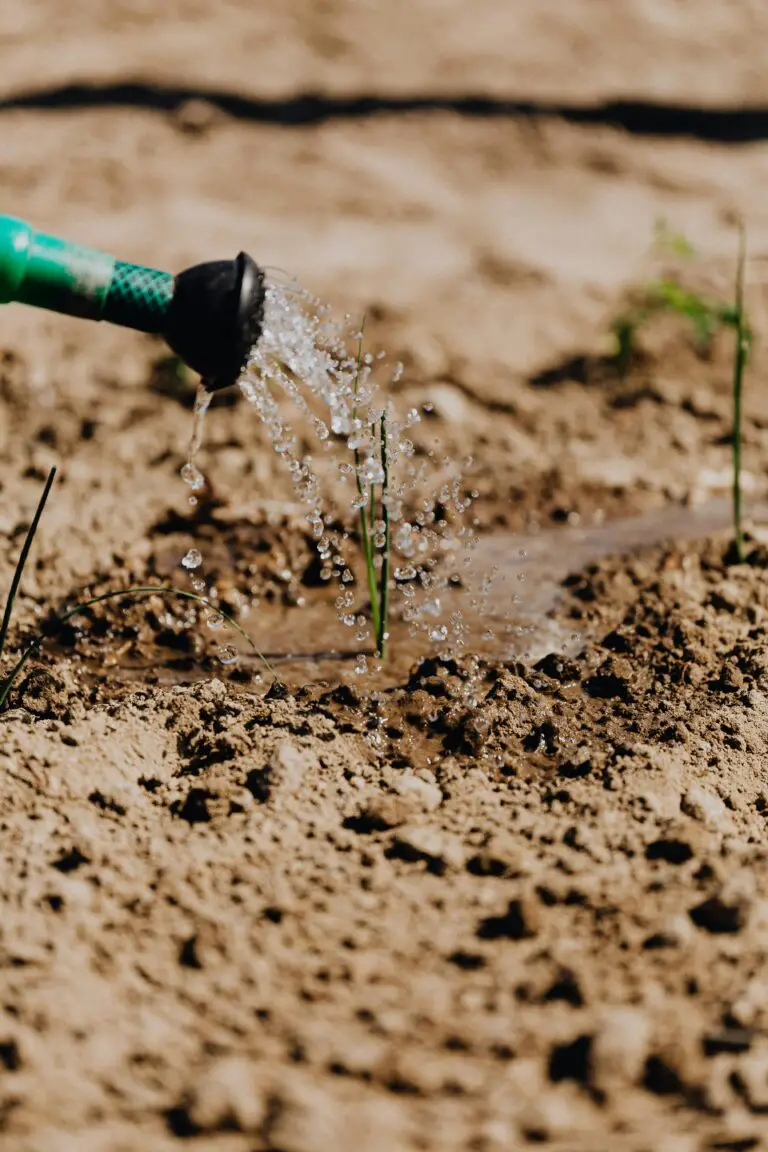
Imagine this: you’ve just given your sedum a meal fit for a king, teeming with all the right stuff. Do you need to do it again next week? Hold your watering can! Overfeeding is a common misstep. Sedums thrive with a ‘less is more’ approach. Aim to fertilize these hardy troopers just once at the beginning of their growing season. This single feast is typically enough to sustain them throughout the sunny months.
The takeaway here is to treat your sedums to a nutrient-packed meal when they wake up from their winter snooze. And then? Let them be. Watch as they bask in the glory of infrequent but impactful feedings, developing into lush, vibrant mounds of joy. Trust in the power of a well-timed nourishing nudge, and before you know it, you’ll be the proud plant parent of a thriving sedum that doesn’t just grow—it soars!
The Golden Ratio: Dialing in the Right Amount
It’s all about the golden ratio. No, not the one you’re thinking—the fertilizer ratio. For sedums, it’s essential to zero in on the precise amount. Too much and you risk lush leaves at the expense of those iconic blooms. Too little and, well, you’re back to square one, scratching your head and muttering, “why is my sedum not growing?”. Stick to the guidelines on your fertilizer package, and you’ll strike the right balance, paving the way for a sensational sedum showcase. Just remember—when in doubt, underdo it. Sedums have a knack for thriving with minimal intervention. They’re the zen masters of the garden world, after all.
Now you’re equipped with the insider info to unlock the potential of your sedums. Nurture them with the correct nourishment, and they’ll reward you by reaching for the stars—or at least, the tips of their pots. So go ahead, feed them wisely and watch them grow!
Pests and Diseases: Prevention and Problem-Solving
When your sedum resembles a patchy, wilted shadow of its former lush self, it’s time to play detective. More often than not, the culprits behind this garden crime scene are pests and diseases—unseen adversaries that operate under the cloak of soil and leaf. Let’s zoom in on these garden saboteurs and hatch a plan to keep your sedum safe and thriving.
Imagine this: It’s a sunny afternoon, your sedum’s leaves glistening, when suddenly, you notice bites and nibbles. You’ve got an aphid infestation! These tiny, insatiable insects love a good succulent feast. Deploy your first line of defense by introducing natural predators like ladybugs and lacewings to your garden. They’re not just pretty faces; they’re nature’s own pest control agents! In addition, a gentle wash with soapy water can help evict these unwelcome tenants.
But wait, there’s more! Your sedum isn’t just a fine dining spot for aphids. Slithery slugs and snails see your plants as an all-you-can-eat buffet, particularly in damp conditions. Don’t let them slime their way to victory. Sprinkle diatomaceous earth around your sedum or set up a barrier with copper tape. When dusk falls, these mollusks recoil from these deterrents like vampires from sunlight.
Disease-wise, sedum’s resilience is often put to the test. Damp conditions can spawn an outbreak of powdery mildew, turning leaves into a ghostly white canvas. Act swiftly by removing affected parts and applying a fungicidal treatment. For an eco-friendly approach, biweekly milk sprays can bolster your sedum’s defenses, making it less inviting to the mildew marauders.
Root rot, the silent assassin, strikes when there’s excess water where your sedum’s roots lie. Prevention is key—ensure your soil has proper drainage and resist the urge to overwater. Should your sedum’s roots fall prey to rot, it’s surgery time. Trim the rotten roots and repot in fresh, well-draining soil.
Stay vigilant with regular inspections, and at the first sign of trouble, remember these tips. With these strategies in your gardening arsenal, your sedum won’t just survive; it’ll prosper, flaunting its full, green glory for all to see!
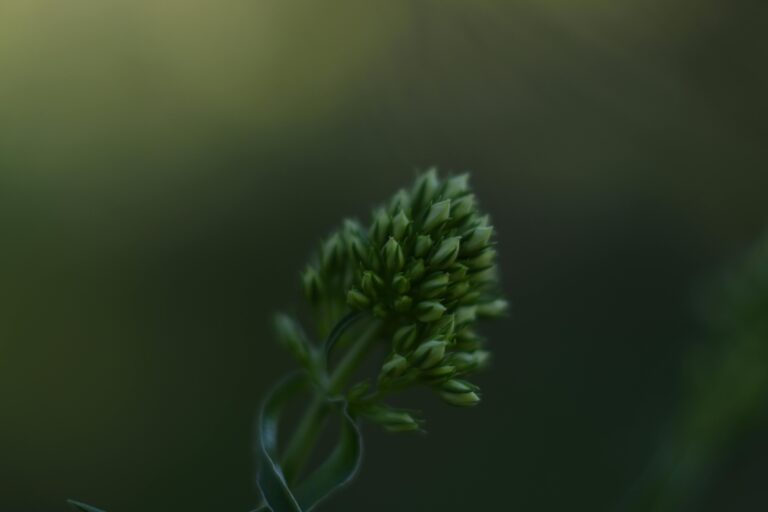
Propagation Pitfalls: Common Mistakes to Avoid
Aspiring green thumbs, gather around! Let’s dive into the world of sedum propagation and uncover the common blunders that could be stunting your efforts. Sedum, with its dazzling array of colors and forms, can be a robust addition to any garden or windowsill. Yet, when it comes to multiplying these succulent beauties, even the most seasoned gardeners can trip up. Remember, knowledge is your best tool – or should we say trowel?
Starting off on the wrong root, it’s crucial to select healthy and vibrant parent plants for propagation. If you’re wondering, “Why is my sedum not growing?” check that the mother plant isn’t waving a white flag. Snapping a weak or diseased stem would be like copying a faulty file – you’re just setting up for a propagation fail!
The Cut is the Key
Moving to the actual art of cutting, it’s a make or break moment. A clean, sharp snip right below a leaf node can mean the difference between a thriving new sedum start and a withering wanderer. And let’s not forget – after making that perfect cut, give your new sedum baby a moment to callous over before introducing it to soil. This crucial step is like armor against rot, and skipping it is a rookie mistake that’s too common in the diary of disappointed gardeners.
Ah, and then there’s the impatient gardener’s plight – burying the cutting too deep, too early! Let’s set the record straight; a shallow grave in a well-draining potting mix is all your sedum start needs. Bury it too deep, and you might as well be laying it to rest; it needs to breathe, not be smothered.
Lastly, before you hurry off to tend to your sedum starts, take a moment to observe real garden heroes at work. Check out this video on how to avoid these propagation pitfalls, ensuring your sedums grow as lush and vibrant as mother nature intended.
${video_embed_code}
Steering clear of these propagation pitfalls, you’re now equipped to cultivate sedum starts that won’t just survive – they’ll thrive! Go forth with your cutting shears, and propagate with confidence. Your green sanctuary awaits the full splendor of flourishing sedums!
${video_embed_code} =>
Seasonal Sedum Care: Adaptations for Changing Weather
If you’re scratching your head and asking, “why is my sedum not growing?”, you could be overlooking the plant’s seasonal needs. Sedums are like actors taking on different roles with the changing of the seasons; they’re versatile but still need direction. Let’s cue the right moves for your green cast member to shine all year!
As the warm whispers of spring arrive, it’s showtime for sedum’s grand entrance. Come springtime, your sedum is waking up from winter’s chill. It’s time to reduce the heavy mulch and introduce a gentle watering schedule. Imagine the drizzle of a spring rain, enough to quench thirst, but not so much as to drown the roots—think of reruns of your favorite gentle rain shower scenes, just enough to set the mood. This is also the prime time to cut back any dead foliage and allow the new shoots their moment in the spotlight.
Summer brings the full glare of the stage lights, and your sedum is ready for the lead role. These succulent stars love the sun, but too much can lead to a diva moment. Ensure your sedum has some shade during the scorching midday sun, like a director offering a star a break in their trailer. Monitor the soil moisture; it should feel like a backstage towel, slightly damp but never soaking. It’s the season to feed your plant with a balanced fertilizer to support their flowering performance.

As autumn leaves begin their dance, it’s the twist in the plot for your sedum. While other plants start to fade, sedum takes center stage with vibrant fall colors. It’s the perfect time to minimize watering, like dimming the theater lights at intermission. The cooler weather means less evaporation, so let the soil go almost dry. If you’ve overwatered, your sedum’s leaves will be the first to protest with sogginess and discoloration, like a costume mishap that no one can ignore.
When winter’s quiet descends on the garden, it’s the final scene for the year. It’s not the end, just a cliffhanger. This is the time for your sedums to rest, and they prefer a drier set. Cut back on watering to mimic the natural conditions—picture the quiet of a snow-covered landscape. A light mulch can act like a warm blanket during the coldest nights, but be sure not to smother your plants. Remember how our favorite characters leave a scene looking cozy yet dramatic? That’s your winter goal for your sedums.
In extreme weather, be it a scorcher of a day or an unexpected frost, think of it as a plot twist. Provide temporary shade with a screen or cloth during a heatwave, as if improvising a scene to protect the star. For unexpected cold snaps, laying a frost cloth over the plants can shield them from a chilly climax they’re not ready for. It’s these adaptative techniques in caring for your sedum across seasons that will ensure they not only survive but thrive irresistibly, like a blockbuster hit, regardless of the year’s story arc.
Professional Tips: Expert Advice for Maximum Sedum Growth
For many gardening enthusiasts, watching a sedum flourish is akin to witnessing a patch of sunshine settle on their garden beds. But when these sturdy succulents stall in growth, it prompts us to dive into the ‘whys’ and ‘hows’ of sedum care. Let’s tap into the treasury of professional gardening wisdom to ensure your sedum doesn’t just survive—it thrives!
First off, water wisdom: sedums demand moderation. These are plants that thrive in neglect, so overzealous watering can lead to their downfall. Imagine the deserts and rocky landscapes they originate from—your watering schedule should mimic these drought-prone habitats. So, hold the watering can unless the soil is bone dry, and imagine each drop as a precious resource!
Next, let’s shine some light on sunlight exposure. Sedums bask in the glory of bright, direct sun. They’re solar-powered wonders that crave at least 6 hours of uninterrupted light daily. Think of a sedum that flourished on a sun-drenched rocky crag; it’s that full, bold sunlight that encourages strong, resilient growth. Position your plants where they’ll get their daily sunbath, and watch them stretch and grow with contentment.
Envisioning our plot’s soil composition is vital, too. Sedums detest damp feet, so a well-draining soil that’s more grit than loam is what separates thriving sedums from struggling ones. It’s like setting up a plant’s home with the perfect balance of coziness and airflow – too much compactness, and the roots suffocate. Blend in sand or perlite to your soil and create a fluffy, airy haven for those roots to expand.
Nourishing the Groundworks: Nutrition and Fertilization
As for diet, sedums are far from fussy eaters, but they appreciate a sprinkle of nutrition now and then. However, remember that sedums are the ascetics of the plant world. A heavy-handed approach with fertilizer is a recipe for soft, weak stems rather than the robust, sturdy ones we adore. Use a light touch with a balanced, slow-release fertilizer that echoes the nutrient-sparse conditions of their natural habitats.
Lastly, the importance of spacious surroundings cannot be overstated. Sedums relish their personal space. In garden parlance, ensure your plants are not crammed in with other flora. This affords them maximized air circulation, essentially preventing the humidity hug that fosters fungal maladies. It’s like reserving a VIP area at a club—exclusive access to all the resources they need without competition.
Now, let’s bring to life what we’ve discussed with a real-life example: Sandra, a seasoned gardener, was stumped by her lackluster sedum. Despite a sunny spot and careful watering, growth was minimal. On inspection, she realized the soil was too dense, trapping moisture. Swapping to a gritty mix and thinning out the neighboring plants gave her sedums the VIP treatment they deserved. Sandra’s garden is now a testament to the power of space and soil to transform sedum growth.
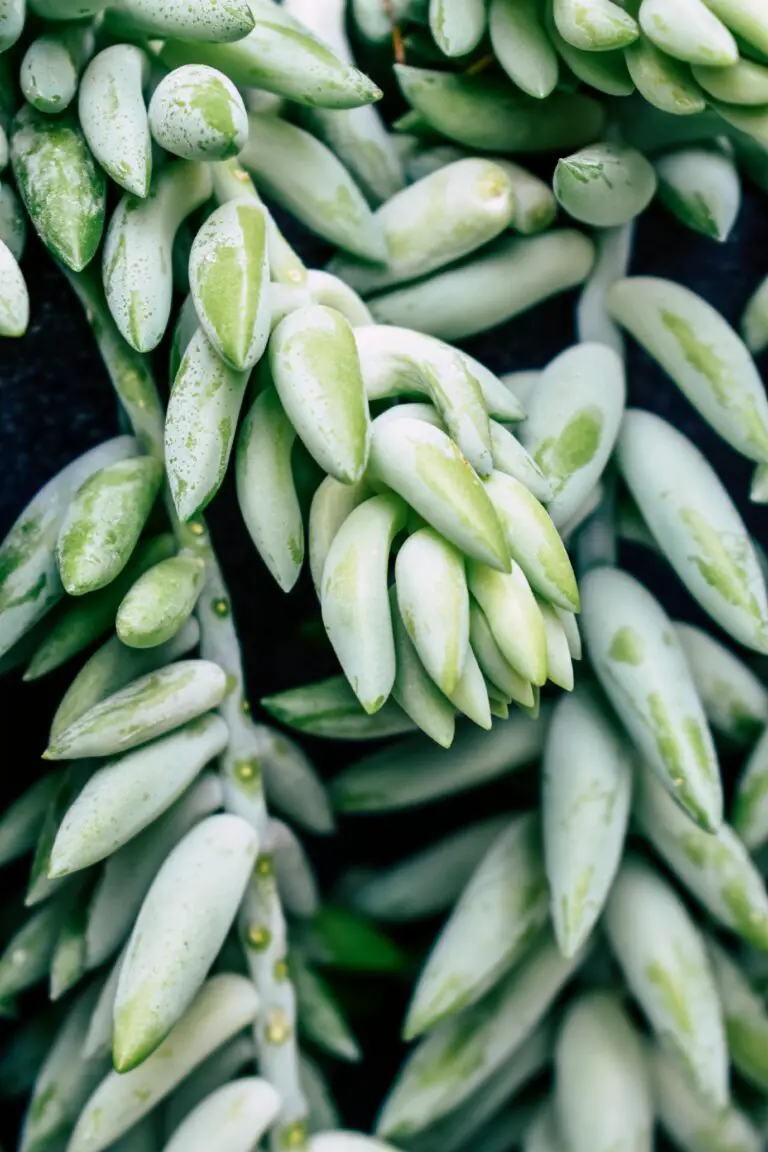
With these guidelines in mind, take a moment to observe your own sedum plants. Are they telling you they’re in need of a drier touch, a sunnier outlook, a fluffier bed, or a little more room to breathe? Heeding the subtle cues of these hardy succulents will unlock the secrets to lush, vibrant growth. So go ahead, apply these professional tips and watch your sedum not just survive, but exuberantly thrive!
Frequently Asked Questions
Sedum, also known as stonecrop, is a hardy succulent that’s adored for its forgiving nature and luscious appearance. But, what happens when your green companion decides to play hardball and refuse to grow? It’s time to channel your inner garden detective and crack the case of the stagnating sedum. Let’s dig into some of the most pressing queries buzzing in the minds of sedum enthusiasts.
How often should I repot my sedum?
Imagine your sedum’s roots are like growing children—eventually, they’ll outgrow their shoes. Generally, if you witness your sedum’s roots peeping through the drainage holes, it’s showtime for a new pot. This isn’t an annual event; it’s a ‘read the signs’ situation. A good rule of green-thumb is to repot every 2-3 years, but always be on the lookout for those tell-tale root signals.
Why are my sedum leaves turning yellow or falling off?
Yellowing leaves can be the plant equivalent of a distress signal. Often, it’s a case of too much enthusiasm with the watering can. Sedum prefers tough love—too much water and those vibrant leaves will start to pout and yellow. Think of your watering routine like a minimalist’s mantra: less is more. On the flip side, leaves dropping faster than a hot potato often scream ‘I’m parched!’ So before you water, ask your sedum how it ‘soil’ feels—that’s right, stick your finger in the dirt and check its moisture levels!
In the vibrant world of sedum, your actions can spell the difference between a thriving plant and a gardening conundrum. Remember, these succulents are more than just pretty foliage; they’re mini-ecosystems that demand a keen eye. Keep these tips in mind, and you’ll be on your way to flourishing stonecrops that make fellow gardeners green with envy!



